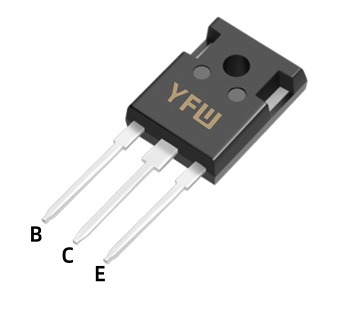How to Use Power Transistors 2
Date:2025-05-29 Categories:Product knowledge Hits:448 From:Guangdong Youfeng Microelectronics Co., Ltd
Thermal management is another critical aspect.
Power transistors dissipate significant power, which generates heat. Excessive heat can lead to thermal runaway and component failure. Always use a heat sink appropriate for the transistor’s power dissipation. The heat sink should have a low thermal resistance and be mounted properly with thermal compound between the transistor and the heat sink to improve heat transfer. Additionally, consider the ambient temperature and airflow around the component to ensure effective cooling.
In circuit design, pay attention to the load connected to the
Power transistors. The load impedance should be matched to the transistor’s output characteristics to maximize power transfer and efficiency. For example, in audio amplifier circuits, impedance matching between the transistor and the speaker is essential to deliver the desired power without excessive distortion.
Protection circuits are also important. Implement overcurrent protection, such as a fuse or current-sensing resistor, to limit the collector current in case of a fault. Overvoltage protection, using zener diodes or transient voltage suppressors, can safeguard the transistor from voltage spikes. These protection measures enhance the reliability of the circuit and extend the lifespan of the
Power transistors.

Previous:
Classification, Structure, and Principle of MOSFET
Next:
How to Use Power Transistors 3
